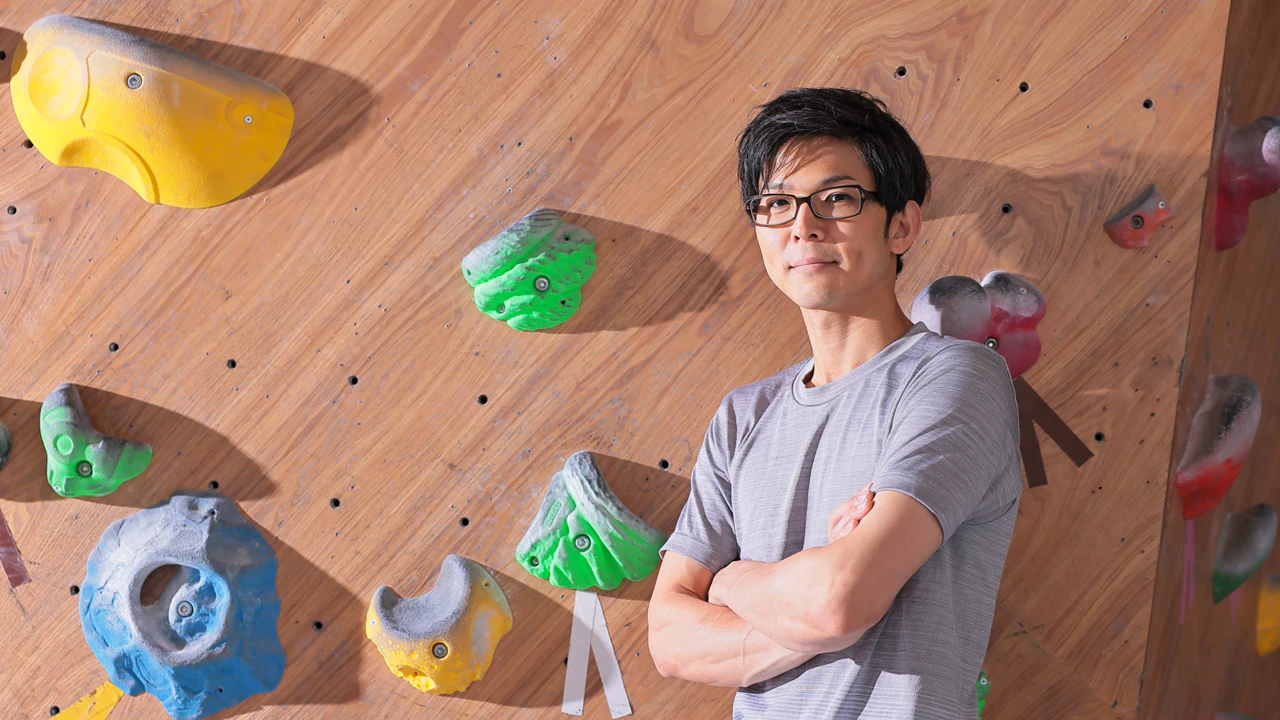
Associate Professor Akihiro Kawamura of Kyushu University
Contributing to advances in academic research through KYOWA Dr. Kawamura supports mechanical research with the bolt axial force meter
In a climbing gym somewhere in Fukuoka City, we find Associate Professor Akihiro Kawamura, who teaches at the Graduate School and Faculty of Information Science and Electrical Engineering at Kyushu University. Surrounded by his seminar students, Dr. Kawamura, in a casual T-shirt, is seen chatting and giving out instructions while gazing at a bouldering wall and dusting the grip chalk from his hands. So what led Dr. Kawamura and KYOWA to meet and collaborate? We delved into this story in Fukuoka.
The bolt axial force meter, indispensable for advancing research
Please tell us about your research, Dr. Kawamura.
I specialize in the field of robotics, focusing primarily on the control of robot hands and arms. For robots with multiple joints, we deal with mechanics similar to those of humans, which led me to believe there might be a connection to sports science. This inspired me to start research in the field of sports science as well. The reason I focused on bouldering is largely because I have been bouldering as a hobby for about seven years. Currently, I am researching both robotics and sports science.
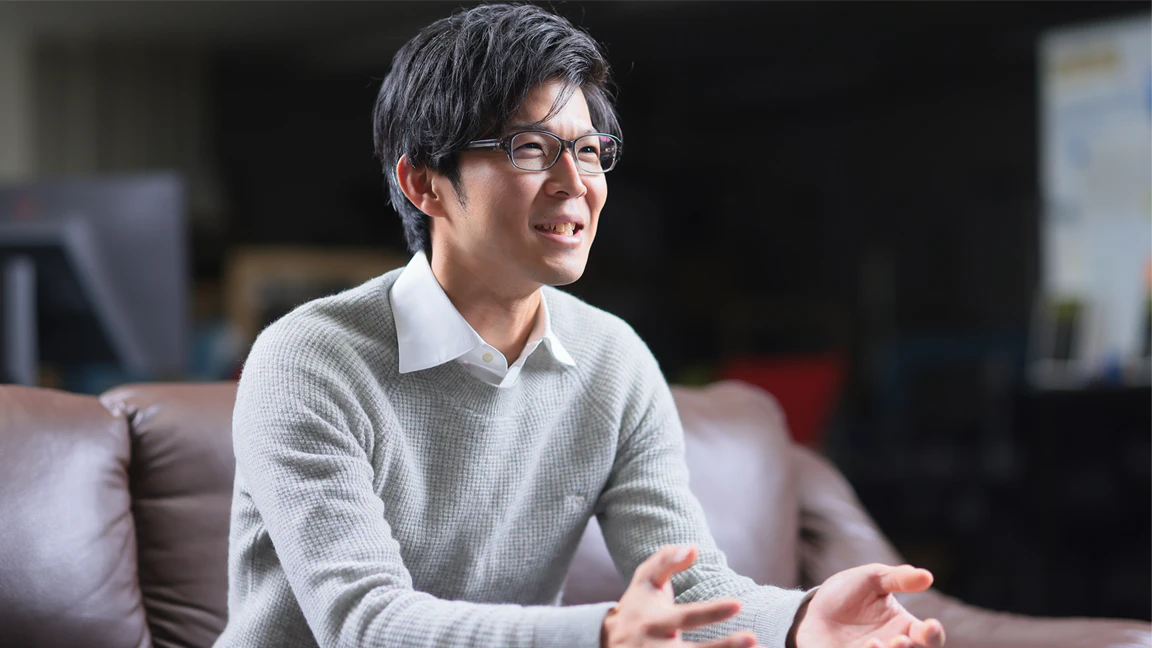
How is KYOWA involved in your research?
The parts of the bouldering wall that are grabbed are called holds, and we install bolt axial force meters with built-in strain gages from KYOWA inside the bolts that secure these holds. This allows us to measure how much force is applied to the holds. We have been using motion capture for measurements, but it's challenging to measure in areas with steep wall inclinations or areas that are not flat.It's impossible to understand through motion capture alone where and how force is distributed between the hands and feet when climbing a three-dimensional wall, or how much force is applied between the hands—the so-called internal force. We believe that quantifying and demonstrating these using the bolt axial force meter can prove useful for training and coaching.
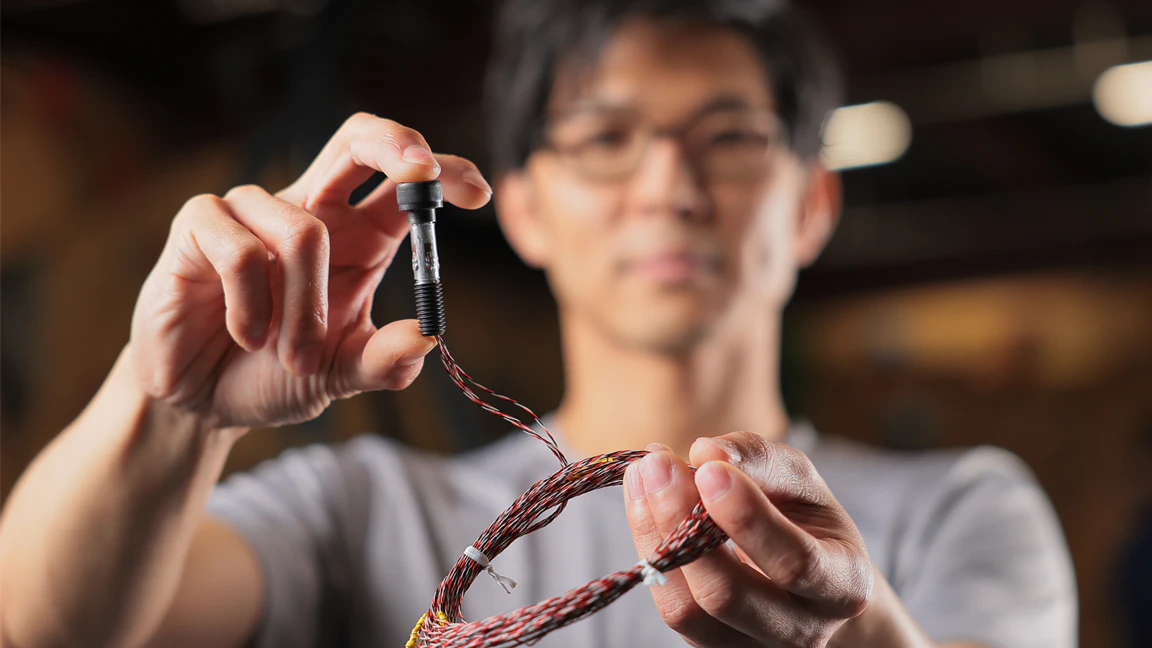
Could you tell us what led you to use KYOWA products?
We decided to create bolt-type sensors, and initially, we asked a different company we were acquainted with, not KYOWA, but that company wasn't specialized in measurements. As the research progressed, we needed more specialized and advanced technology, so we contacted KYOWA through their website, and that's how our relationship began. The technical challenge was to lead wires from the tips of the bolts, not the heads. If the lead wires were to come out of the heads of the bolts, this would obviously interfere when gripping the holds. Leading wires from the tips of the bolts to the back of the wall would solve the problem. The company we initially asked said this would be difficult and refused, but KYOWA said they could do it without hesitation. I remember feeling very relieved.
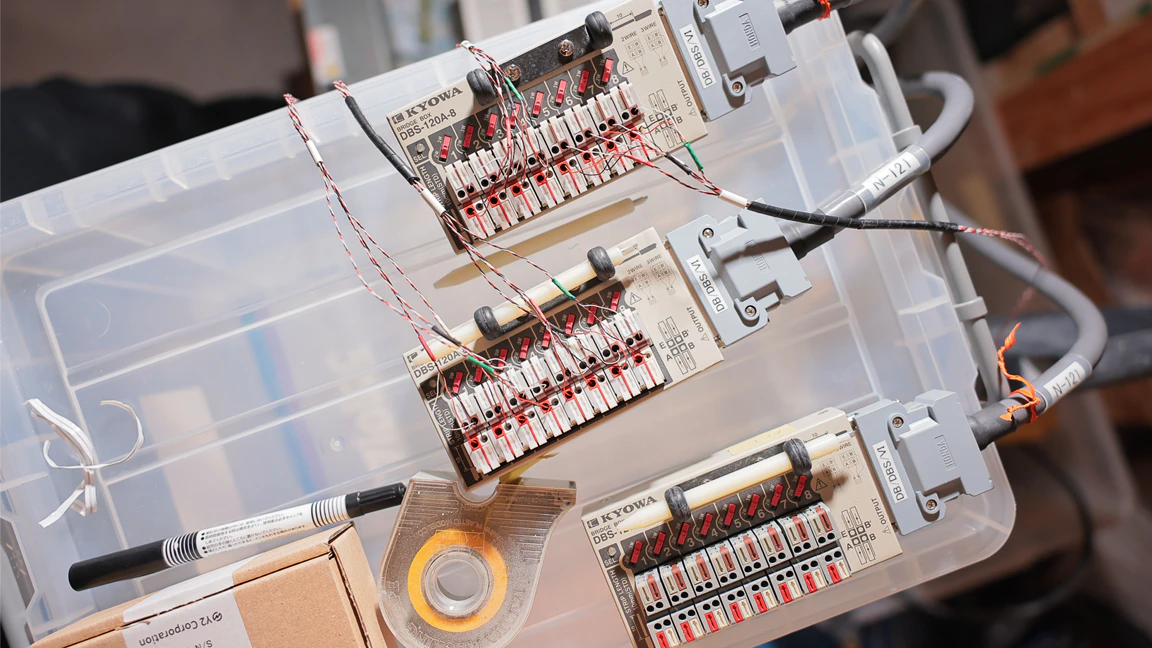
Exploring climbing through science. KYOWA: A pillar of support
How is the data gathered with the bolt axial force meter applied?
Given the wide array of movements in climbing, the field of sports science is currently behind when it comes to measuring and analyzing data. While sports such as baseball have standardized movements, including batting and pitching techniques, sport climbing presents unique challenges with each climb and varying wall inclines, making standardized movements non-existent. There are also individual differences, such as height, to consider. Identifying the "correct" movements proved to be an elusive task, so I think that demonstrating this quantitatively is very significant. In terms of training systems, this makes it possible to quantitatively show how to apply force, allowing for one to practice and then verify if the movements align with the coaching. Essentially, it translates what was previously reliant on human intuition into quantifiable data for training enhancement. Simply put, this is a scientific approach to climbing.

How was the support you received?
The support has been nothing short of invaluable. For example, when we were making sensors, we made requests with regard to specifications and various other aspects. We also asked for connectors to be attached to cables, and we borrowed amplifiers. The support has been all-encompassing. It wouldn't be an overstatement to say that our current measurement system would not function without KYOWA’s support. Moreover, they respond promptly to technical inquiries, suggesting specific methods and referencing case studies. Their extensive technical knowledge, experience, and expertise when it comes to measurements streamline the process and make communication smooth.
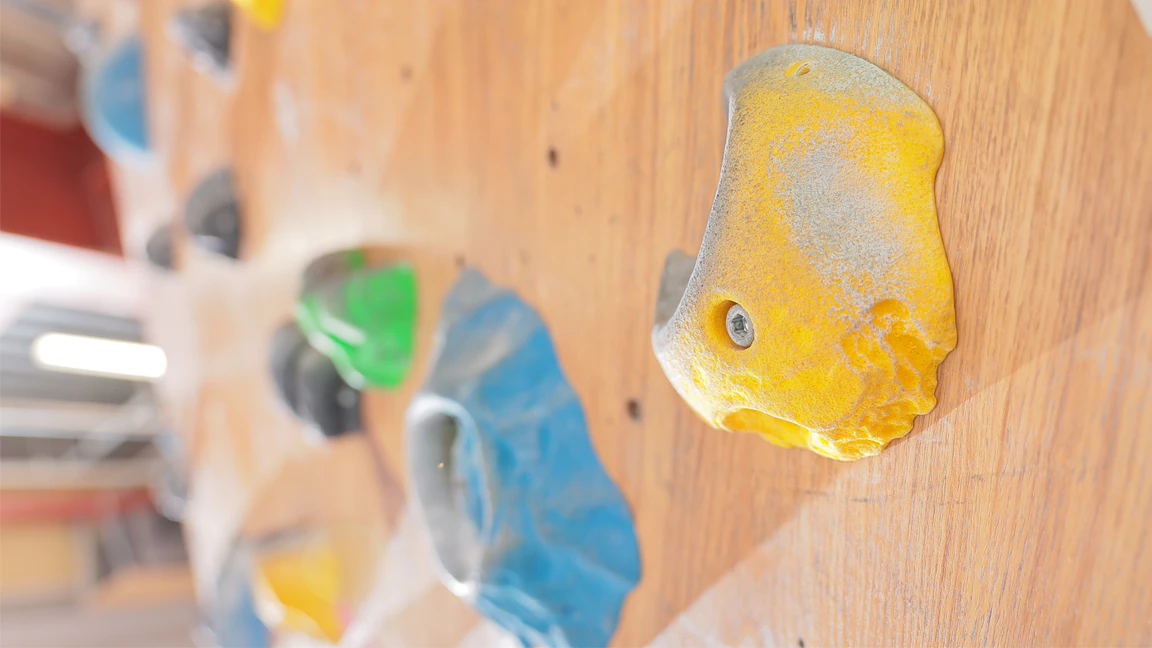
Striving for the permanent installation of measurement systems
Please share your future aspirations, what you hope to achieve through your research, and your collaborative efforts with KYOWA.
Our goal is to establish a measurement system utilizing bolt axial force meters as a permanent presence in climbing gyms. Needless to say, extending lead wires from the bolt tips is crucial for achieving this. Since these wires are routed behind the wall, it's vital for climbers to remain unaware of their presence, both visually and physically. Achieving permanent installation of the measurement system would not only allow for the collection of extensive amounts of data, but also enable this to be applied in competitive environments. We believe that this kind of data collection could significantly accelerate research advances through data analysis. Clearly, climbing is not the only sport where we want to take force measurements. In theory, this system could be applicable across various sports, especially those that involve setting up measurement systems on the environmental side, such as bouldering walls.

Are you thinking about using this in industrial fields as well?
Absolutely. For example, measuring the pressure on a robot's base typically results in added thickness due to the integration of a sensor. Utilizing a bolt axial force meter could eliminate these kinds of spatial constraints, which would offer significant advantages in terms of robot design. There’s no doubt that a measurement system utilizing the bolt axial force meter is a cornerstone of our research in the fields of sports science and robotics.
(Post-interview reflections)

What stood out most was Dr. Kawamura's earnest gaze. The same was true of his students, whose eyes sparkled as they gazed at the bouldering wall. Dr. Kawamura and his students are truly dedicated to their research. And serving as the backbone of their efforts are the bolt axial force meter-based measurement system and KYOWA. The bolt axial force meter has enabled them to surmount a number of challenges and propel their research forward day by day. Perhaps what illustrates this fact most clearly is the sparkle in the eyes of Dr. Kawamura and his students.
Please feel free to contact us if you have any problems with measurements or if you have questions about our products.